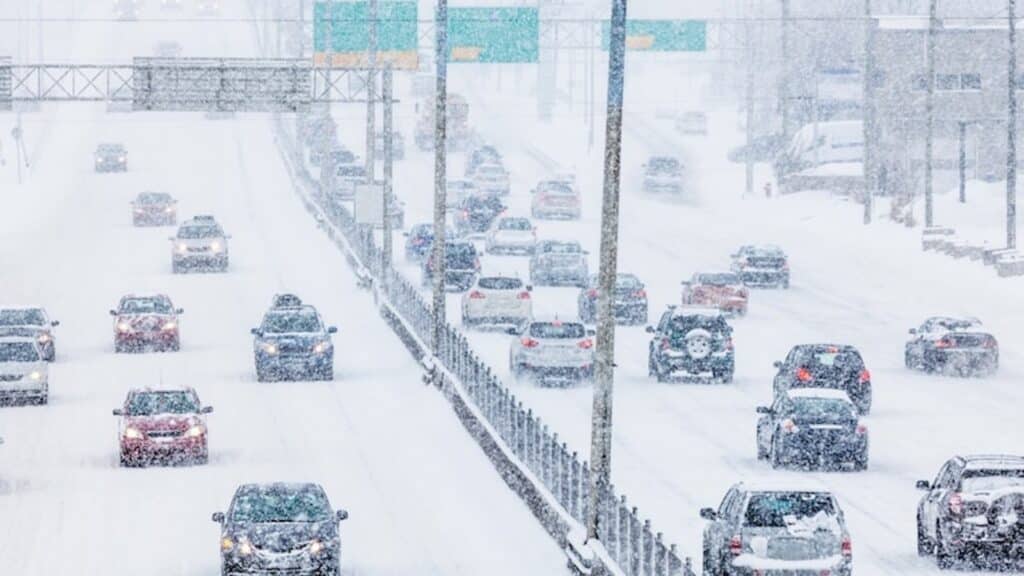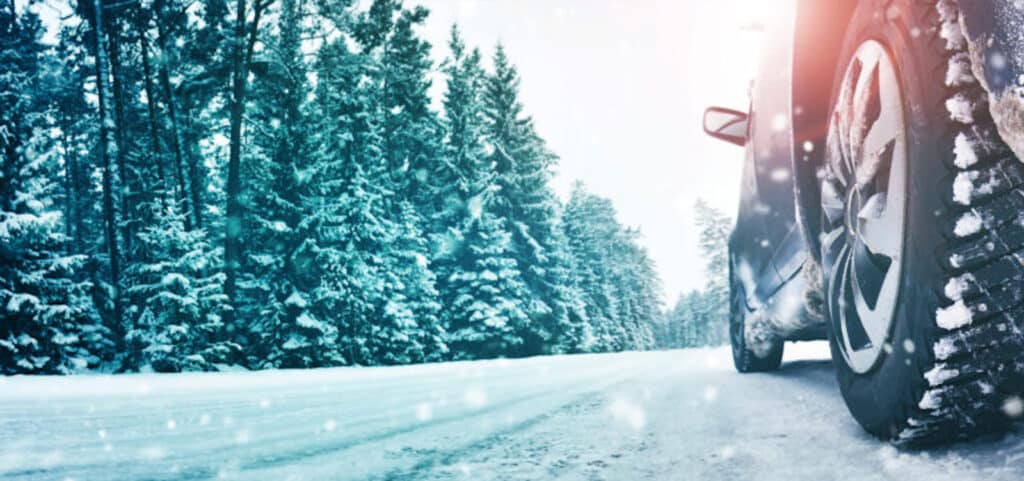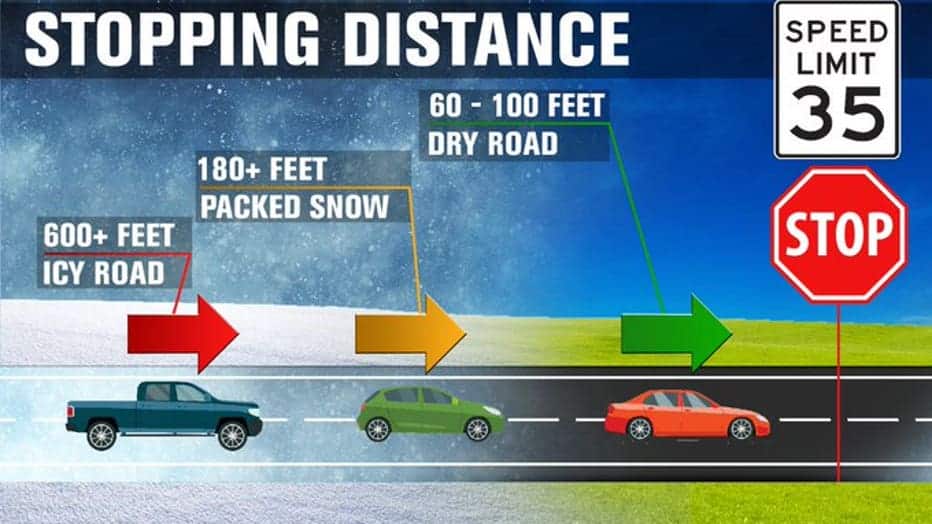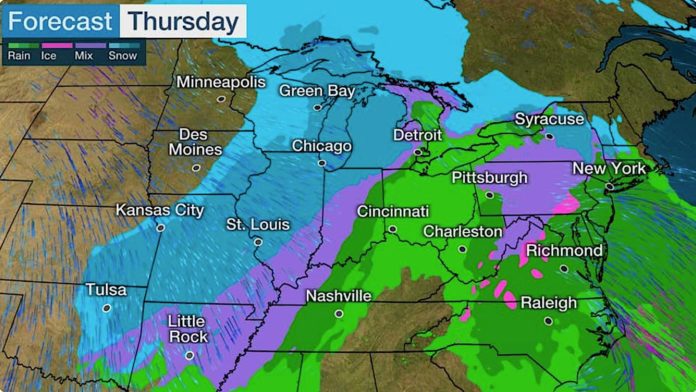A severe winter storm is rushing down on most of the United States this week, and the National Weather Service is calling it a “once in a generation” event.
This storm could turn the northern tiers of the United States and most Canadian provinces into an icy mess. On some of the heaviest travel days of the year, authorities are preparing for crippling road closures and extensive flight cancellations.
If your flights get canceled and you’re looking at driving, or if driving was your plan all along, it’s going to be necessary to take more than the usual precautions this week. Even if conditions aren’t so bad where you are when you start your journey, the weather can change within minutes or miles at any time. If you’re prepared for the worst that Mother Nature can throw at you, it could be the best investment you can make.
Is your vehicle really ready?
Because your vehicle may be subjected to sub-zero temperatures, here are a few pointers to check before you go?
Do you have the right tires? Real Winter tires, either studded or studless, are your most important safety device in a severe snowstorm. All-season and even all-weather tires are not the same. If you don’t have the right tires, staying home is far better choice than wrecking your car. Before you go, check to make certain they’re fully inflated — and don’t’ forget to check your spare.

Ask yourself if your vehicle is really reliable and be honest about the answer. If you don’t know when you last freshened your anti-freeze, or if your vehicle has been a little hesitant to start up from cold in the morning, that’s only going to get worse on the road.
(To get additional tips for more sedate weather for holiday travel, check out Larry Printz’s story by Clicking Here.)
Before you head out, check your emergency supplies. At a minimum, you should have enough stuff to sleep in your car and stay warm, hydrated and fed. That means warm clothes and blankets for everyone (and maybe some to give away to others) as well as non-perishable food, plenty of water, and wet wipes for washing. Chemical-based hand warmers are also a great idea.
It’s a good idea to carry some supplies to get yourself out of a light jam. A bag of sand from the home supply store can give you enough traction to get moving again, and flares or reflective triangles can warn other drivers so they don’t slide into your car.
How you pack is just as important as what you pack. Make sure your emergency supplies are right on top for easy access if you need them. Keep water in the vehicle’s cabin with you so it doesn’t freeze.
Make sure that someone who is not traveling knows where you’re going, what route you will take and when you expect to arrive. If you’re late, make sure they know to sound the alarm sooner rather than later. Don’t deviate from your planned route without letting that person (or several people) know about the change in plans.

Drive to survive
Once out on the road, overconfidence is your worst enemy. This is especially true if your vehicle is equipped with all-wheel or four-wheel drive. Powering all the tires helps you get moving, and it helps you turn a little bit, but it does absolutely nothing to help you stop or slow down.
This is especially true for larger pickup trucks and SUVs that weigh more than passenger cars. Heavier rigs take a lot more time and distance to slow down, and they’re harder to turn on slick surfaces. Additionally, older 4WD vehicles may turn off electronic traction and stability controls when 4X4 is engaged. In many situations, these trucks and SUVs handle better in 2WD mode.
The main rules to remember are to reduce speed and give yourself more time and space to maneuver. Further, beware of snow drifts, as these can pull your vehicle off the road if you drive over them. Finally, if a road looks dangerous, don’t even try it.
Billy, don’t be a hero
Sometimes you’ll encounter folks on the road who have gotten stuck. They may have some recovery equipment such as a tow strap or tow rope, and they may be looking for someone to help extract their vehicle. If you don’t know what you’re doing, any attempt to assist could lead to damage to one or both vehicles, and potential injuries as well.

Most emergency kit tow straps are not rated for pulling vehicles out of ditches or culverts. They’re designed to pull the weight of a vehicle on its tires on a flat surface. Further, the hooks on those tow ropes may be inadequate for the forces exerted. We’ve seen radiators punctured and truck tailgates bashed in by flying hooks and shackles when a tow strap snaps.
The best thing you can do for a stranded motorist is make sure they are safe and warm, give them a blanket and some water, or take them with you to the next safe location so they can call for a tow truck.
If you get stuck
If the worst happens and you can’t continue or go back, you need to be ready to hunker down in your vehicle. That’s what the guidelines listed above are all about. If your vehicle’s exhaust is unblocked, you can run the engine for heat, but be mindful of the risk of exhaust gases. The warmth of body heat in the car will help but having your winter clothing and blankets will be most important.
Set up your triangles so that authorities know you’re there. Above all, stay with your car until help arrives. It’s the safest place for you to be, and by far the easiest thing for rescuers to find.
With a little luck, this storm will be a memory by New Year’s Eve. Be smart with your travel plans and you’ll be there to celebrate.
Jeff Zurschmeide is a two-time veteran of the Alcan 5000 Winter Rally, and that’s why he doesn’t drive in foul weather without a damn good reason.

